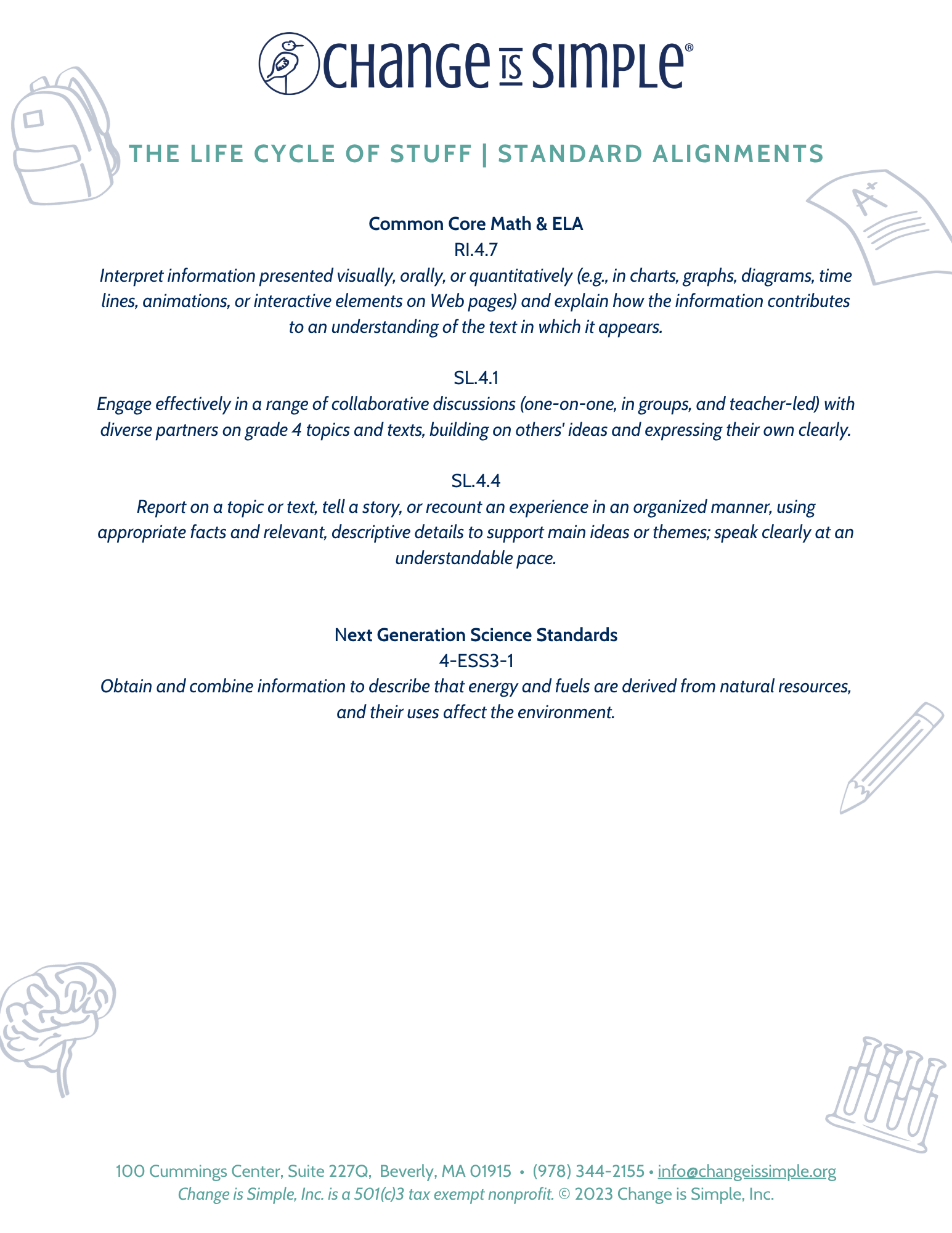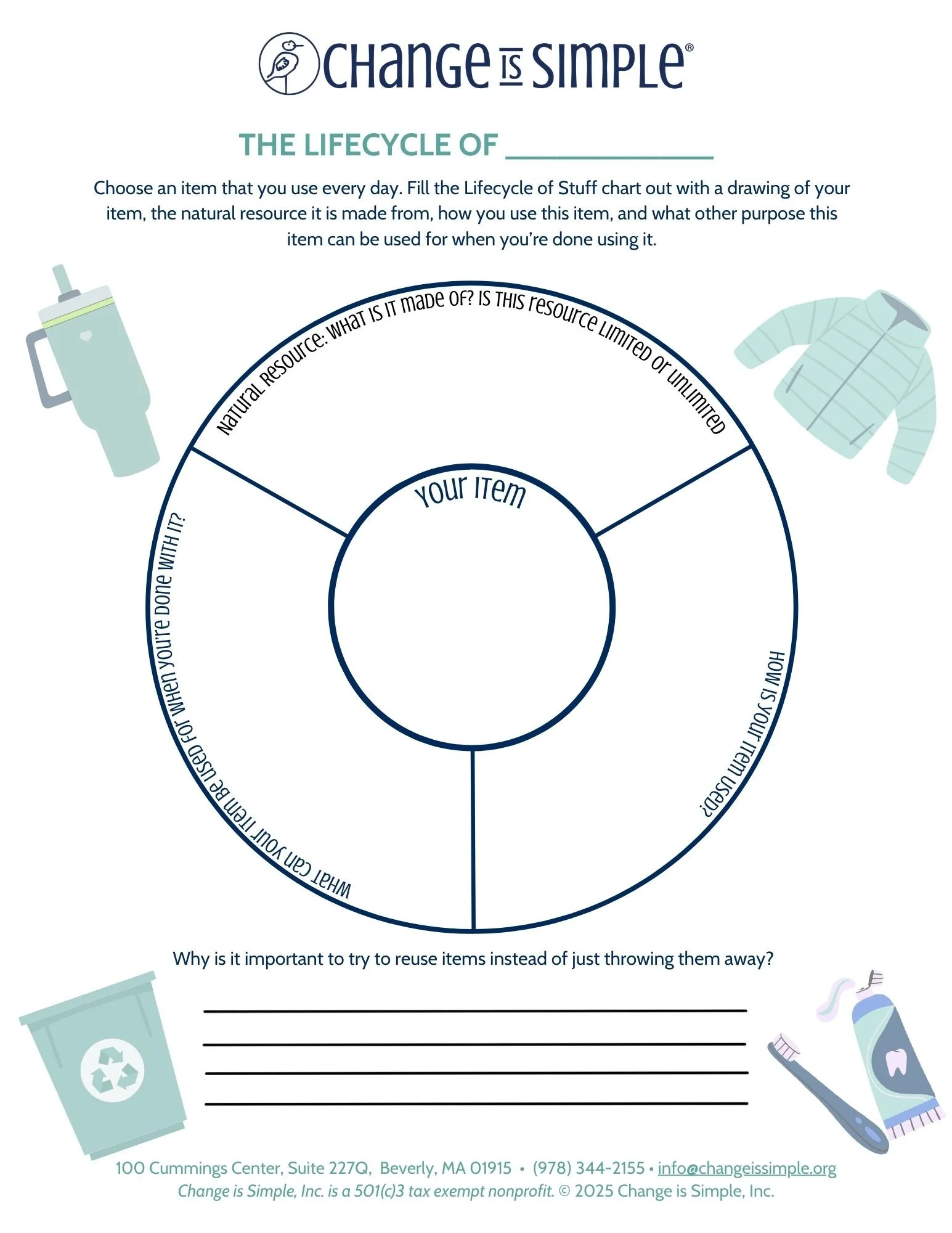The journey of natural resources
Lesson Objectives:
At the end of the workshop, students will be able to:
Define and identify natural resources
Make connections between natural resources and everyday items
Identify the negative aspect of manufacturing processes
Recognize how to help reduce, reuse, and recycle
Identify alternatives to buying new stuff
Essential Questions:
How does our consumerist approach affect the availability of natural resources?
In what ways does the life cycle of stuff impact the environment?
In what ways can the life cycle of our stuff be improved?
Explore our resources
Click on the images to access each resource (available as a PDF or webpage)
Take-Home Guide
Information for parents & legal guardians (available in English and Spanish).
Información para padres de familia y tutores legales (disponible en Inglés y Español).
Standards Alignments
Explore the ways our program aligns with CCSS + NGSS standards.
Vocabulary
Quiz your students on vocabulary used during our lesson!
A Plastic Bottle’s Journey
Follow a plastic water bottle’s journey from an oil rig in Nova Scotia to an incinerator in Saugus while practicing key math skills.
Social Emotional Learning
In this activity, students will answer the prompt questions by choosing a side of the room to go to. Following the activity, students will participate in a short discussion.
Challenge Guide (Student)
Completing this challenge will help your school become a CiS Certified Sustainable School!
Challenge Guide (Teacher)
Facilitator tips for running the Natural Resource Challenge in your classroom.
Lesson Reflection
Print and send home this reflection activity to show families what their student learned.
Background Information
Most people never consider the connection between natural resources and their stuff. An incredible amount of energy and raw materials go into the production of everyday items. For example, it takes up to 715 gallons of water to produce a single cotton t-shirt and 1,800 gallons of water to make enough cotton for just one pair of jeans. Yet in today’s society, wasting resources is acceptable and commonplace. Natural resources should be valued greatly and more diligently conserved. Working towards a zero waste lifestyle can reduce the reliance on limited natural resources. Here are some steps to help achieve a zero waste lifestyle:
1. Refuse what is not needed
2. Reuse as much as possible
3. Swap disposable items for reusable alternatives
4. Recycle what cannot be refused or reused
5. Compost the rest
Disposal completes the “life cycle of stuff.” Items can either be recycled, reused, upcycled, or put into the trash. It can take a plastic bottle up to 1,000 years to biodegrade if it is not recycled. Recycling, reusing, and upcycling eliminates early steps in the “life cycle of stuff” preventing the depletion of natural resources. Using reusable bags, containers and silverware, donating old clothes and toys, and buying only necessary items are simple methods to cut down waste in everyday life. Taking steps towards living a zero waste lifestyle lessens society’s dependence on resources and reduces waste production. The protection of natural resources ultimately benefits not only the environment but also human health as well.












